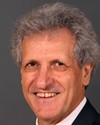Thank you, Mr. Chair, and thank you to the witnesses for appearing today.
I've been chairing the all-party rail caucus for more than three years. I've been very proud of the investment track record of this government. I would argue that we've got the most pro-train government, pro-mass-transit government perhaps since John A. Macdonald committed to the Canadian Pacific Railway at Confederation. We've made significant contributions toward it.
Coming back to what Mr. Bevington was talking about with respect to incrementalism of plans, I think we're moving toward fast speed on the Lakeshore, trains that will operate at speeds of 160 kilometres an hour. For example, they're already hitting 160 kilometres an hour along the Lakeshore, but being able to sustain it for longer periods of time and much shorter travel times we think will increase ridership. That incrementalism will then build better business cases as we move forward.
I hear political will a lot. I've been working on this, I've worked on plans and I've worked on costing. Mr. Cruickshank, with due respect, sir, I'm certain you're substantially under on costs for a dual-line track with electrified fences and so forth. I've worked this out. You're about one-eighth less than what the Americans are finding out when they look at the Amtrak study along the west coast, for example. I'm not saying it would be as expensive as building in California, because there are geographical challenges, but you're under.
One of the big challenges in government, when you're putting together a federal budget, is choices. What are we trying to manage? You have presentations. This year, for example, there are almost 700 presentations to the federal finance committee for where they would like to see money spent. It's not about political will. It's about how much you have. There's never enough money. Governments only have a finite amount of money, so you're left to make choices.
I'm not surprised you found such great support, because I can tell you in Obama's stimulus plan people were asked what they liked the best of all the things in the stimulus plan, and everybody said they loved high-speed rail. But there's only $8 billion, and it's a drop in the bucket when they're talking about the number of high-speed lines that are viable in the United States over time.
If you asked people if they would like to see substantially shorter health-care wait times or high-speed rail, what do you think they would say?





